Iran (IMNA) - A fiesta for the senses, Havana is a city made to stroll, with plenty of cultural attractions and unique things to do. Listen to live rumba music on a street corner, feast at restaurants where Hemingway once dined, or inhale the salt-soaked air along the famous Malecón.
But perhaps the best part of a visit to Havana is the people. Friendly and outgoing, the locals are proud of their culture-rich Caribbean city and happy to share its historic treasures and many hidden gems. Learn about the highlights in and around the city with our list of top attractions in Havana.
Old Havana (Habana Vieja)
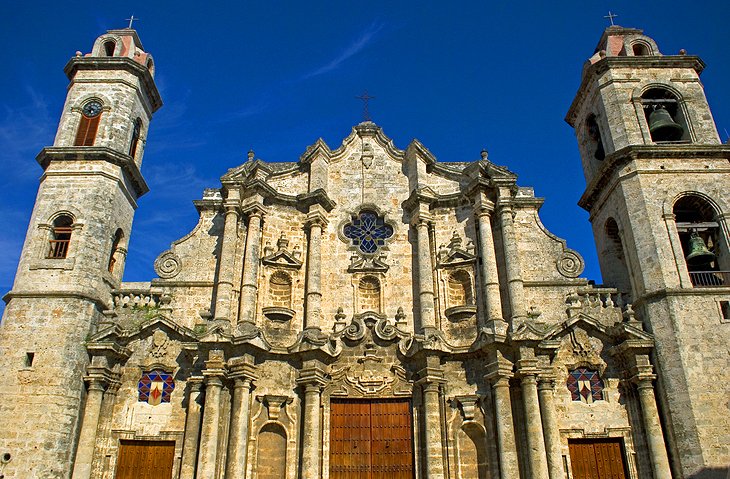
Old Havana, Cuba, a UNESCO World Heritage site, oozes the charm of days gone by. Elegant neoclassical and Baroque buildings border cobbled squares and narrow streets, and many have been carefully restored to their former beauty.
If you're wondering what to do in Old Havana, start your sightseeing tour by heading to one of the popular public squares: Plaza Vieja and Plaza de Armas. The latter is where the splendid Palacio de los Capitanes stands, home to the Museo de la Ciudad (City Museum) and a delightful leafy courtyard.
Other highlights of Old Havana include the magnificent Catedral de San Cristobal, a celebration of the Cuban Baroque style, and the stout Castillo de la Real Fuerza, an impressive military fortress.
To tap into the lively vibe of Havana, take a walk along Calle Obispo. By day, you can browse the shops and art galleries and admire the colorful Cuban Baroque and Art Nouveau architecture. By night, live music lures you into buzzing restaurants and entertainment venues. Here, you'll also find the famous El Floridita restaurant, a must-do on most tourists' sightseeing lists.
After soaking up all the history of this captivating quarter, climb the 35-meter tower of the camera obscura for a breathtaking overview of these well-aged jewels.
Finally, if you're looking for places to eat in Havana, the former Hemingway hangout, La Bodeguita del Medio, serves up succulent seafood and ice-cold drinks.
The Malecón
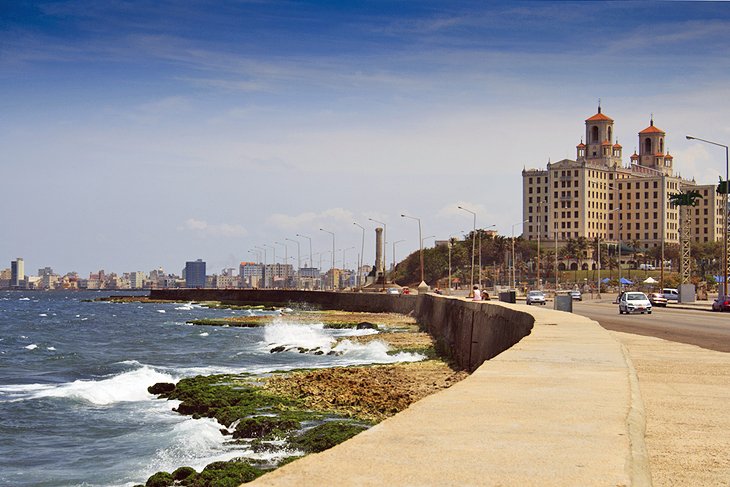
Havana's famous seafront boulevard runs about seven kilometers from Habana Vieja (Old Havana) to the Vedado and Plaza area. Overlooking the boulevard is a colorful collection of well-preserved 20th-century buildings in a mix of architectural styles, from Art Deco to Neo Moorish. In the golden glow of the setting sun, they make a beautiful photo.
The Malecón is also a great place to meet the locals. Anglers come here to cast their lines, and families and young couples saunter along the seafront enjoying the fresh air and ocean breezes.
Those seeking to rest their weary feet should stop by the historic Hotel Nacional de Cuba, a World Heritage Site and a National Monument with a long list of glamorous former guests, including Frank Sinatra, Marlene Dietrich, and Marlon Brando.
Castillo de los Tres Reyes del Morro
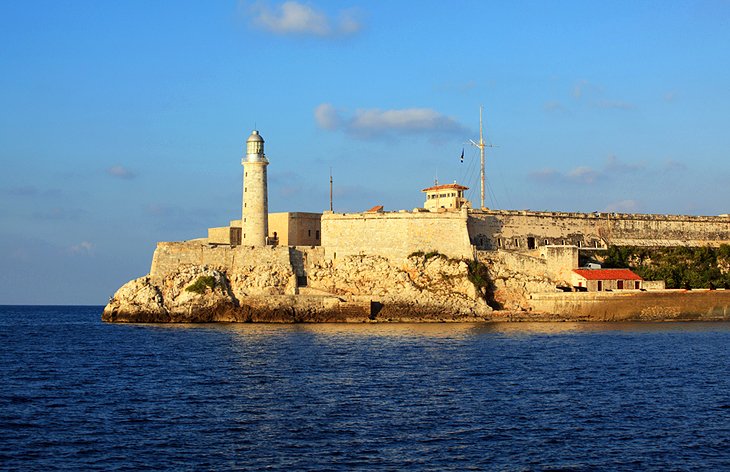
El Morro was built in the late 16th century and early 17th century to guard against the constant threat of pirate attacks. It was designed by Italian engineer, Giovanni Battista Antonelli and looks much the same as it did in the 17th century.
One of the main changes to the fort is the lighthouse. It was rebuilt several times and then finally replaced in the middle of the 19th century with a new lighthouse constructed of solid stone. Today, its original lamp still shines, and the fort is open to tourists. You can enjoy beautiful views over the ocean and the city of Havana from its upper reaches.
El Capitolio (National Capitol Building)
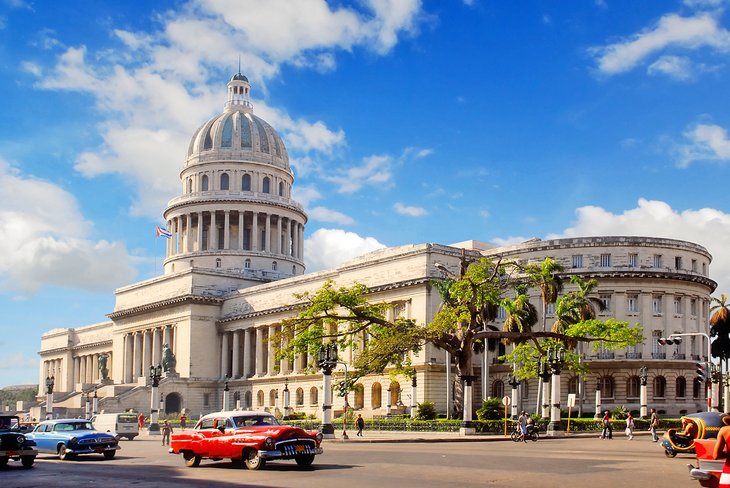
Travelers to Havana who have visited Washington, D.C. may do a double take when they see beautiful El Capitolio, inaugurated in 1929. Rising from the city skyline, this grand building is reminiscent of the American Capitol building, but it was the Panthéon in Paris, which reputedly inspired its distinctive cupola.
The structure displays a blend of neoclassical and Art Nouveau styles and was the seat of government until 1959, after the Cuban Revolution.
For a small fee, you can take a guided tour of the recently restored building, with headsets provided in the language of your choice. Highlights include the grand hallways, beautiful inlaid marble floors, and massive dome.
Atop the dome is a replica of the bronze sculpture Mercury, originally created by the 16th-century Florentine sculptor Giambologna. Below the dome is a replica of a 24-carat diamond. This reputedly marks the point from where all highway distances between Havana and other destinations in Cuba are measured.
El Capitolio remains a striking landmark for those wandering around Havana; its huge dome is visible from almost anywhere in the city.
Paseo del Prado
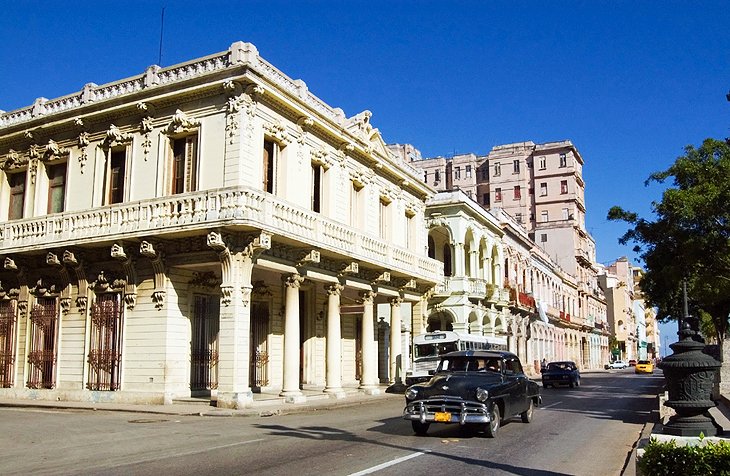
The terrazzo, marble benches, bronze lions, and iron lampposts impart the feel of a grand boulevard from a bygone era, and indeed the street was once home to some of Havana's wealthiest families.
Elegant old cinemas, mansions, and hotels from the 19th and 20th century line the street, many of which have been carefully restored. Highlights include the Hotel Sevilla, with its Moorish styling; the home of Dr Carlos Finlay, the man who discovered that mosquitoes spread yellow fever; and Havana's most famous wedding chapel, the Palacio de los Matrimonios.
The Paseo del Prado is a popular meeting place and people-watching spot at any time of day.
Planetware

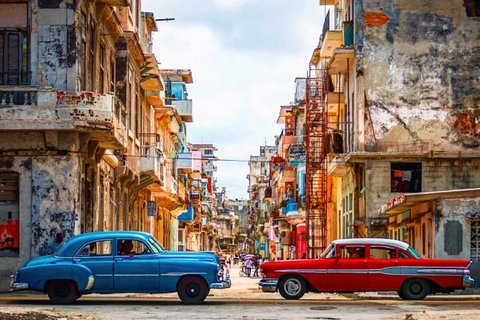
Your Comment